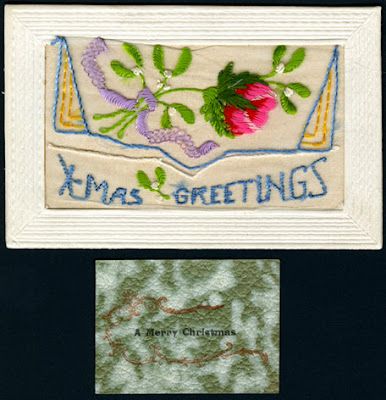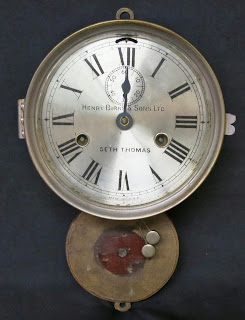 |
| "Poppy" Joe Newman Fonds, 73.561.X.1 |
Embroidered
postcards are believed to have originated in Austria as early as 1903, but they
gained their popularity and reached new artistic heights in the hands of the
French. By 1907, France was a main producer of the cards, which were
hand-stitched by Belgian and French women on strips of silk that were then
incorporated into a cardboard backing. Embroidered cards became wildly popular
during the First World War (1914-1919), when lonesome soldiers would purchase
them as souvenirs to send to loved ones back home, or to keep as reminders of
friendlier, cosier days while surrounded by the misery of the trenches.
 |
| Detail: 73.561.X.1 |
 |
| Detail: 73.561.X.1 |
The card likely
originates from anywhere between 1912 and 1926. It will be on display at the
Peace River Museum and Archives in December as part of the upcoming Holiday
Exhibit.
Message on the back of the card reads:
Wishing you both a merry Christmas and the best of luck in the new Year. From May







